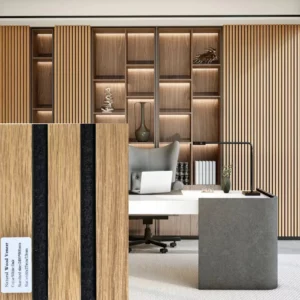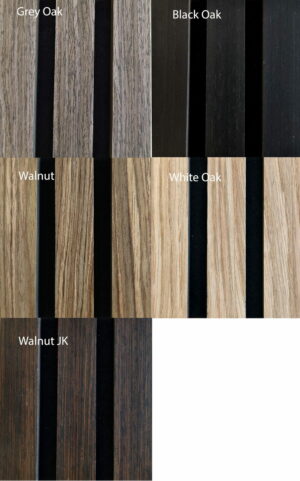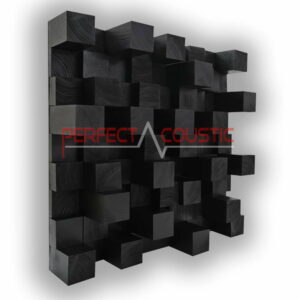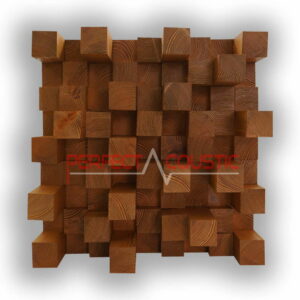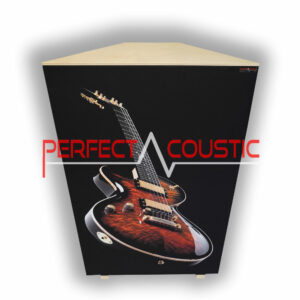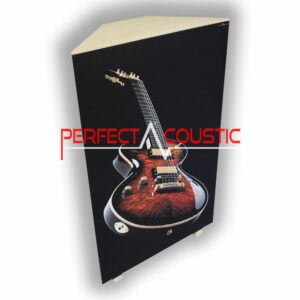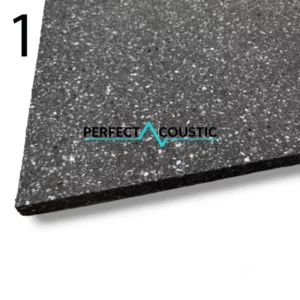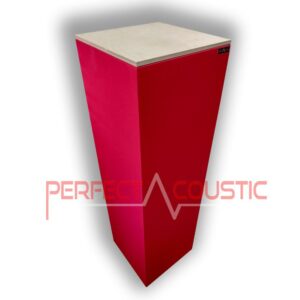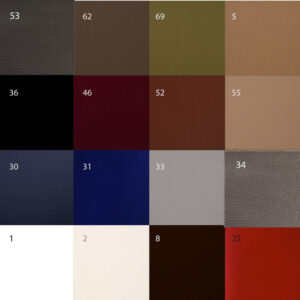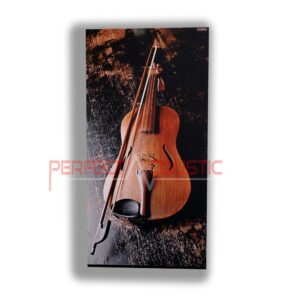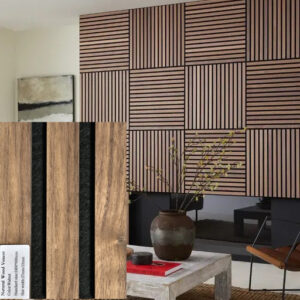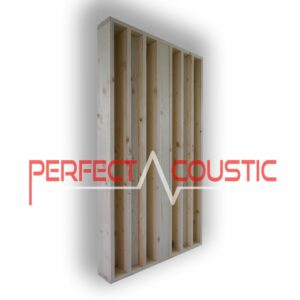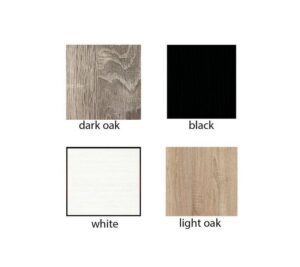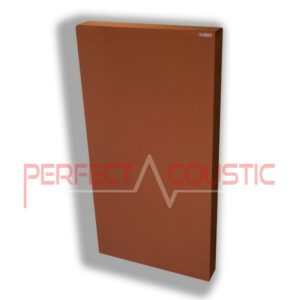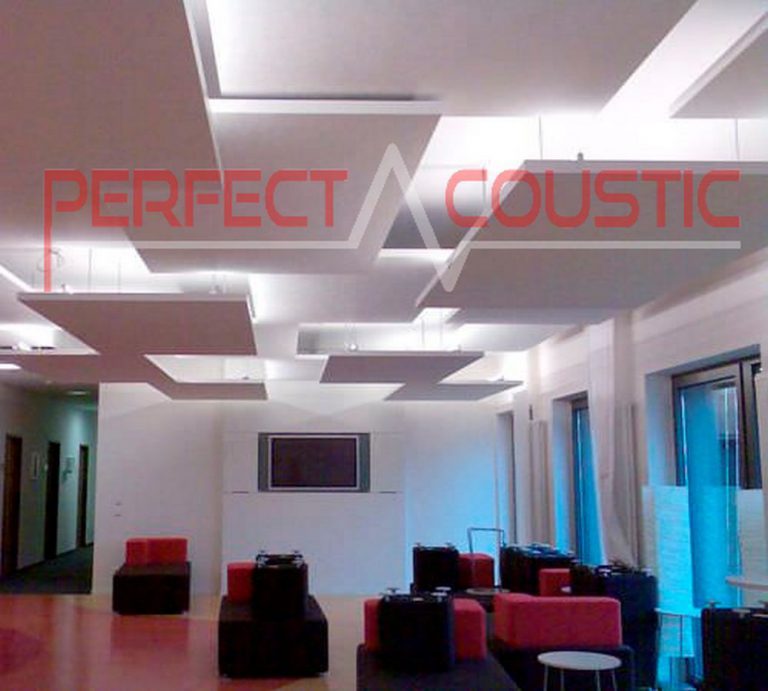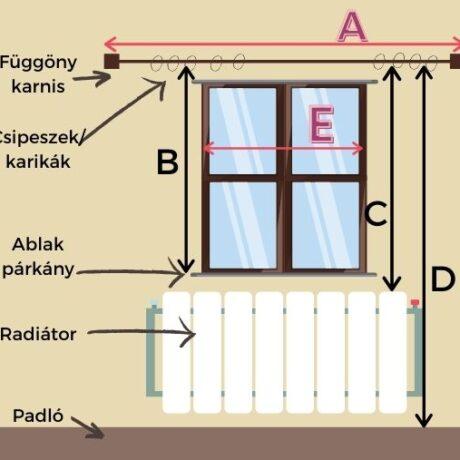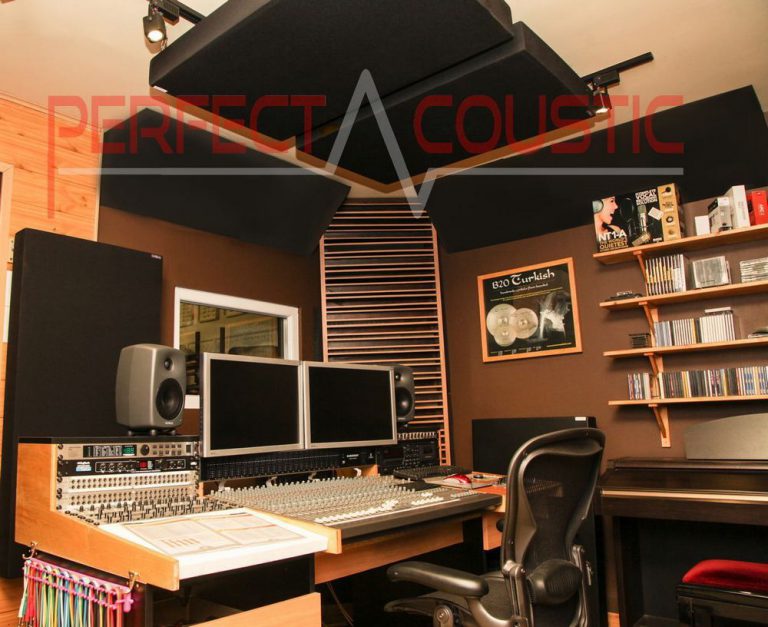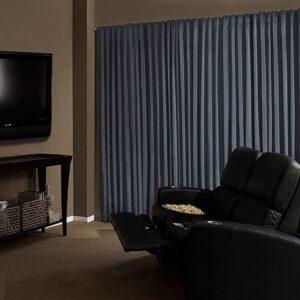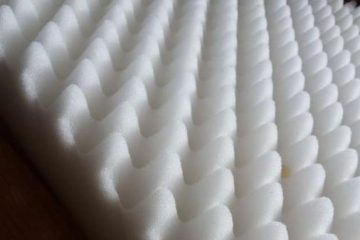Equalizer room correction
Purpose of the Equalizer
A huge number of debates and articles have dealt with this topic in the last 100 years. But the facts do not change. No program can change the acoustics of a room, they can only interfere.
Our most important requirement regarding sound reproduction is to modify the recording the least possible and to hear it in a form the creators dreamt it. This is a widespread opinion mainly in the world of high-end.
That is why very few Audiophile fans use room correction software or device.
Unfortunately, this is a big mistake. Even though somebody is in an exceptional situation of having good acoustics or his/her sounding is already set by acoustic measuring and acoustic panels, remain defective frequency differences that are worth treating.
Of course, computer programs such as Equalizer APO are available.
For analog fans, the Dirac live mini DSP can manage up to 8 channels while the listeners do not hear them at all.
Nowadays almost every avr or computer is equipped with room correction program. These are for example Audyssey MultEQ, Dirac Live, MCACC, ARC, and the list goes on.
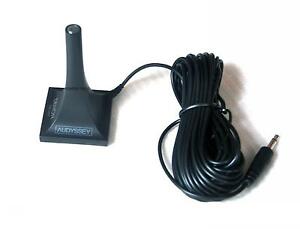
Audyssey acoustic measurement
Audyssey acoustic measurement Very imprecise microphone. Shows different measurement results each time.
Unfortunately, these programs are presented as room correction programs thus people are deceived. With these, we can only set the sound pressure values. In a better case, we can time the impulse transmission e.g.: Dirac live
-
-
Skyline diffusers 60x60x14cm118 € +Vat
-
Decorative acoustic panels (corner bass)175 € +Vat
At that point, the laymen ask: why is it wrong?
These equalizer room correction programs measure only the sound pressure thus they are not able to influence the reverberation, reflections, standing waves of the room, and not even the huge deviation of sound level that is due to the reverberation. The EQ programs signal these deviations as errors thus they decrease the sound pressure to decrease or increase the deviations that may be up to 15-20dB.
The result of these decreases and increases is that they hide the frequencies that may not be wrong and thereby they create phase shift and also a distortion.
Consider as an example this sound pressure curve and the error causing it.
Looking at this sound pressure measurement we can see the huge dip between 40-90Hz that causes a deficiency with a depth of 10dB.
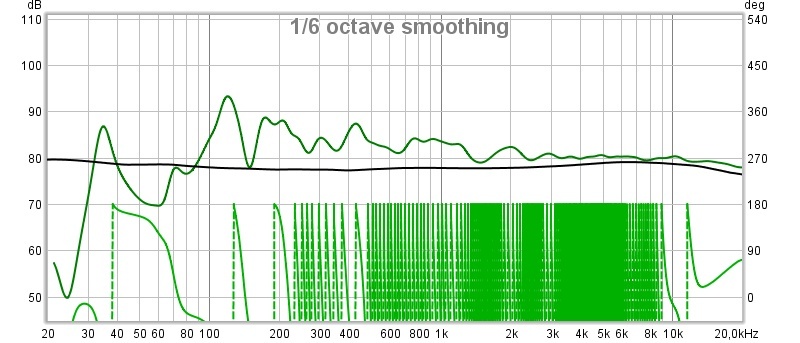
before acoustic treatment
In the below picture we can see a hi-fi rack located beside a loudspeaker and the sound reflected from its side meets the sound arriving from the loudspeaker causing thereby a cancellation in the sound pressure value.
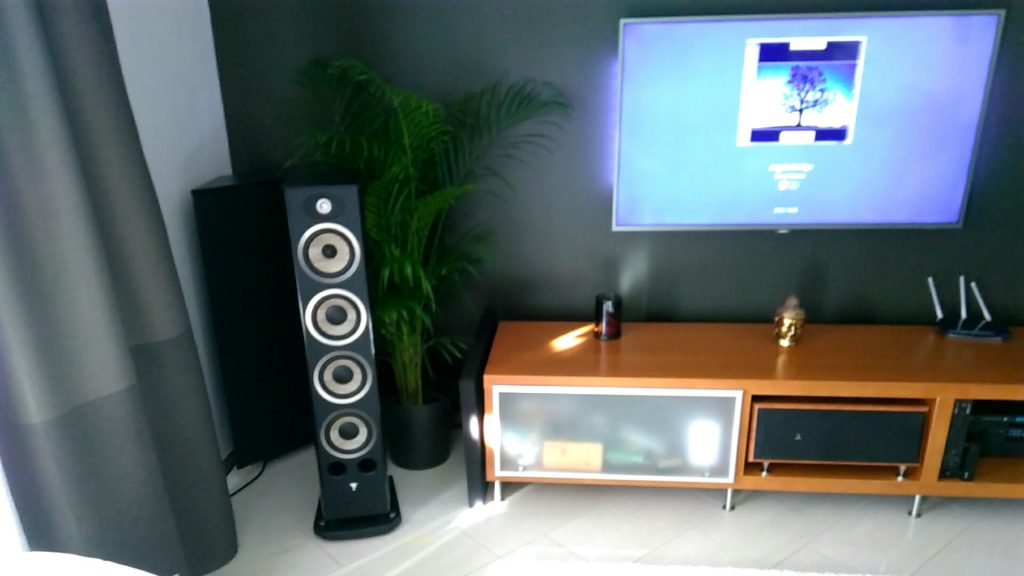
Placing the acoustic panel to a nearby reflection point
If we place a sound absorbing panel to a nearby reflection point as you can see in our example to the side of the hi-fi rack, we can decrease the reflection arriving from there and thereby terminate the dip.
Measuring again after that we can see the decrease of the dip:
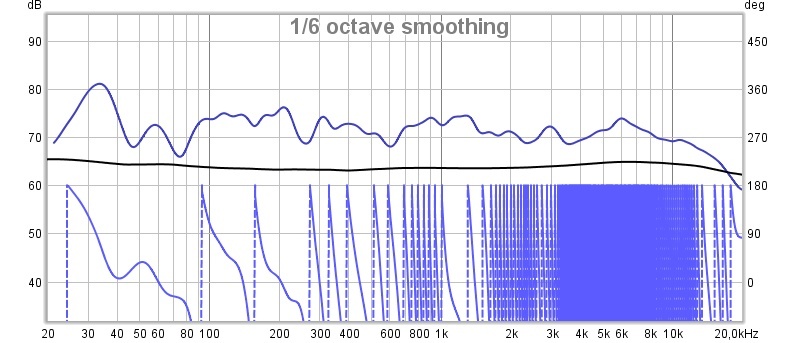
The equalizer program signals this dip as an error therefore it raises the deficient range and produces high distortion thereby.
What is phase delay or phase shift in DRC programs?
We face a phase shift when the EQ program starts changing sound pressure values. The EQ program changes not only the signal levels but also the phase values and distortion. The bigger the level change and the smaller the bandwidth the bigger and “steeper” will be the phase shift.
In the figure below you can see how the phase thread changes with the change of sound pressure value:

Equalizer room correction
This is when the treatment of room acoustics gets involved.
A standing wave or a sound reflected from a nearby object can cause extinction or a peak of up to 10-15dB. The Eq program tries to correct it and raise 10dB which causes high distortion together with a phase shift but if we put an acoustic panel or any membrane of high efficiency to that part we can terminate or decrease that reflection preventing thereby the intense sound distortion.
-
-
Cubic acoustic sound panels80 € – 109 € +Vat
-
Wall art panels87 € – 183 € +Vat
A bass can bounce around the room even 100 times in one second until it slows down completely, causing a lot of extinction and dips in the sound pressure value during that time. That is why we see such a diagram zigzagging.
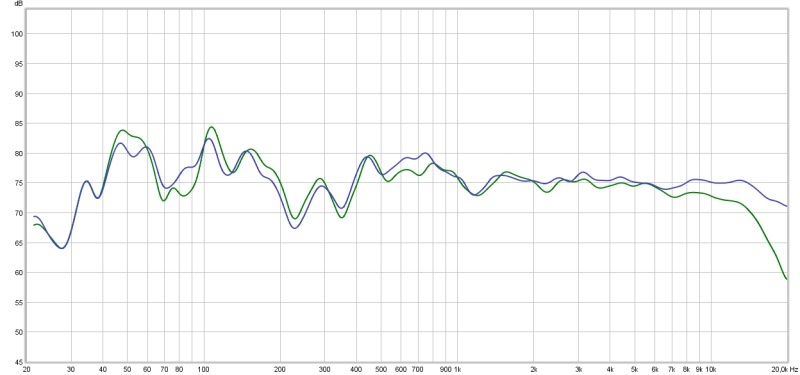
sound pressure curve
If a room is acoustically treated we should hear a balanced sound with a deviation of a few decibels walking around the room. If we go into a room that is untreated or treated with the wrong sound absorbers we will go deaf from the buzzing bass in one moment and they disappear in the next. In the latter case, we can set the balanced sounding only in one listener position (with a room correction program).
Not to mention the reflection points.
In a room, there are at least 8 primary reflection points. We perceive the sound reflections, which we hear delayed, as jumbled and fuzzy sounds. We cannot treat these reflections with programs.

sound reflections
What do the equalizer programs offer then?
They reflect the deviations experienced on the sound pressure curve to their opposite. That means that they do not deal with the error but deal directly with the sign. That will not improve the signal transmission of our loudspeaker or the acoustics of our room.
If the acoustic measurement signals a peak in a certain frequency in the listener position the reason can be often found in the acoustics, as many reflections interact with the direct sound wave. In such cases, the correction lessens the level of the sign in the frequency that causes the problem so that the reference sound pressure appears in the listener position but this will not change the wrong proportion of direct and reflected sounds.
That is why a room correction program can set the sound pressure level properly only in the listener position. We receive a different sound image even 10 cm away.
Then why Equalizer room correction programs and devices are created?
If we disregard the huge revenue from it and turn in the other direction we must realize that a perfect room (whether studio, home theatre, or home theatre-hi-fi room) does not exist.
Even if our room gets the perfect acoustic treatment, we will not have a perfectly straight sound pressure curve. Every room has its frequency curve, peak, and dip that are due to its length, width, and height which we cannot improve with any acoustic panels or sound absorbers. We can treat these problems with room correction programs and in fact, it is much advisable.
If we make minor modifications to the sound we can significantly improve the quality of the audio that has had a great sound already.
In some cases, the dimensions of the room cannot bear the dimensions of the loudspeaker placed therein thus they produce an almost unbearable bass below 100Hz. In such cases the sound absorber panels are not efficient enough, therefore we must pull down the frequencies that cause problems as we have no other option.
Let’s consider the pros and cons.
What an Electronic room correction cannot do?
Decrease the reverberation and echo of a room, cover the reflections, and terminate the standing waves.
Repair the distortions of electronic equipment such as an amplifier, Avr, dac, and all reproducing apparatus.
Influence or repair the defects and tones of loudspeakers and cables.
What can an Electronic room correction do?
Basic EQ programs set only the sound pressure
More serious DRC programs can deal also with impulse transmission and phase, which can improve also the dynamics and the sound clarity.
Level out roughly the frequencies that cause problems due to the size of the room.
-
-
QRD Diffuser171 € – 269 € +Vat
-
Broadband sound panel-It can even be used as a ceiling element44 € – 241 € +Vat
Cue
It seems that I am against the room correction programs.
Not at all. It is indispensable both in studio acoustics and in the audiophile world. I only wanted to illustrate that it is not all-powerful and we cannot replace the acoustic treatment of a room with a simple program. I am also using several types of correction for audiophile and audiophile-home-theatre.
My dedicated home theatre has perfect curves in almost every part but there is a dip between 45-80Hz. It cannot be improved by any acoustic panels due to a structural problem. Therefore, I use mini DSP Dirac Live with 8 channels. https://www.soundimports.eu/en/ddrc-88a.html
Before mini dsp, the Equalizer APO program was the most usable for me on audio pc, which is integrated into Windows and works excellent as a parametric EQ. However, the Room EQ Wizard REW program which is available here free of charge is indispensable for this formation.
The Equalizer APO does not affect the sound quality at all after installation. Unfortunately, I have an old but really good Linn size subwoofer without a phase adjuster, therefore I had to switch to a separate mini DSP, which can improve the impulse transmission and manage my problem due to phase shift.
I visit studios – High-End music rooms every day and I have to say that the remaining anomalies of the rooms that we treated perfectly can still be improved by a mini DSP Dirac Live everywhere.
Thank you for reading.
Please do not hesitate to share your opinion in the comments below!
Written by Róbert Polgár SzG

